01:00
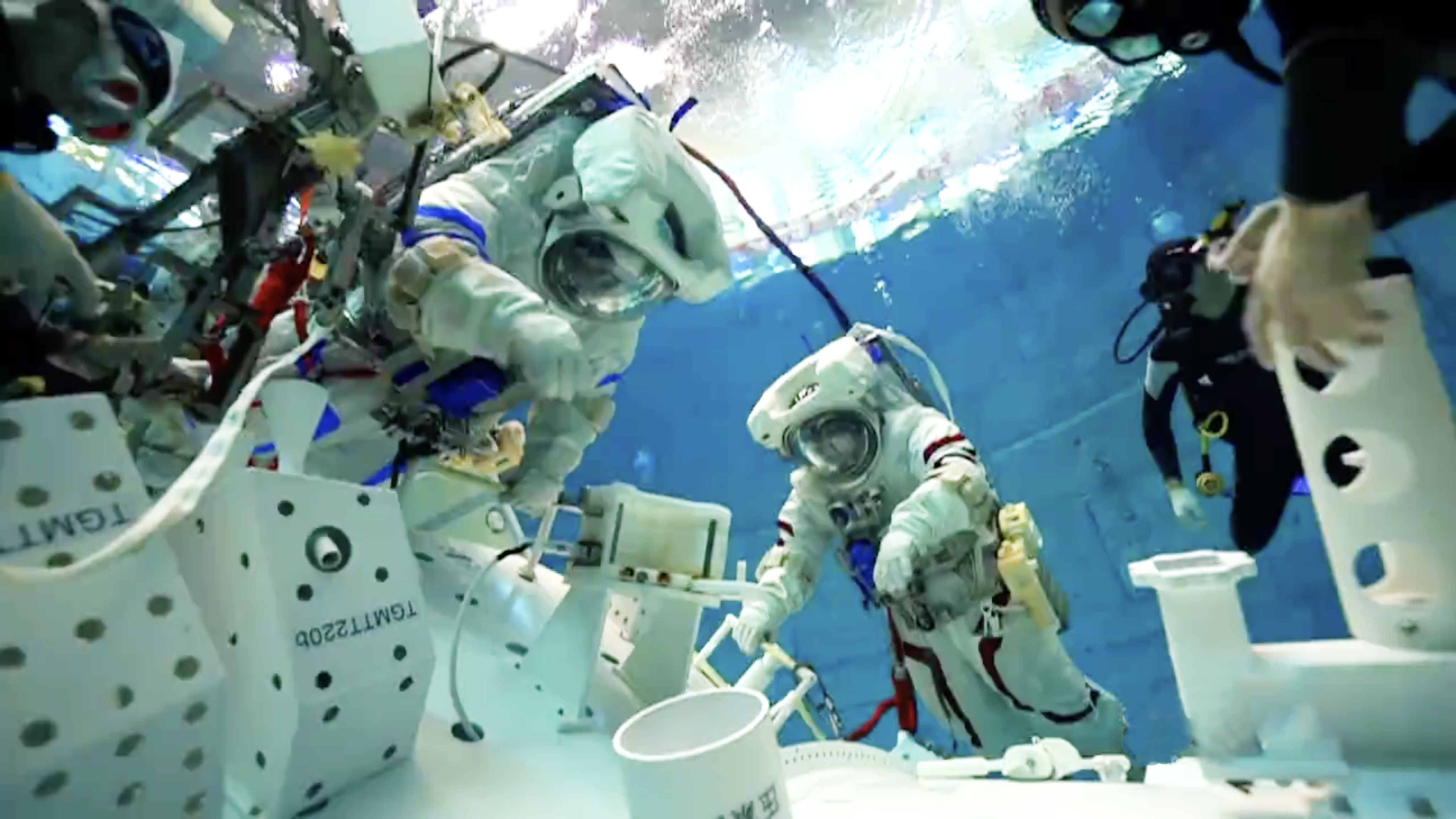
The Shenzhou-12 mission, the first manned mission as part of the construction of China's space station, features a longer stay in orbit and more challenging tasks, and places higher demands on Chinese astronauts than ever before.
The mission will have heavy tasks, Nie Haisheng, commander of the three-man crew, told The People's Daily before their voyage to space.
Besides setting up the new home in the space station, astronauts will carry out extravehicular operation and maintenance.
Compared to the Shenzhou-7 extravehicular activities, which were to test spacesuits and conduct some simple operations, the Shenzhou-12 extravehicular activities include two spacewalks, each lasting for about six hours, and for the first time the use of a robotic arm, making the tasks complex and difficult "beyond imagination," said Nie.
The robotic arm will assist the astronauts in multiple operations, including handling large pieces of equipment, and take them to the right operation sites.
"The extravehicular tasks test the reliability, safety and flexibility of the robotic arm, as well as the coordination between the astronauts outboard wearing the pressurized spacesuit," said Liu Boming, one of the Shenzhou-12 crew.
The whole procedure is very complicated, requiring the astronauts to master a large amount of professional knowledge and operation skills, said crew member Tang Hongbo.
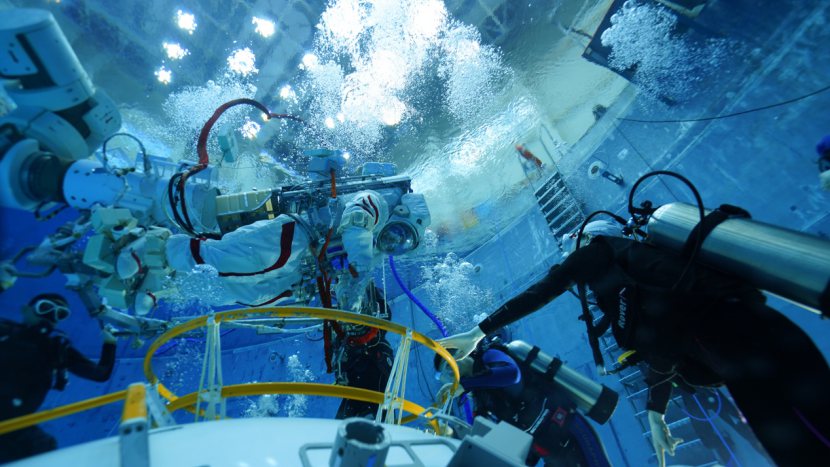
Underwater training of China's astronauts. /Innovation and Practice Center of Our Space
Underwater training of China's astronauts. /Innovation and Practice Center of Our Space
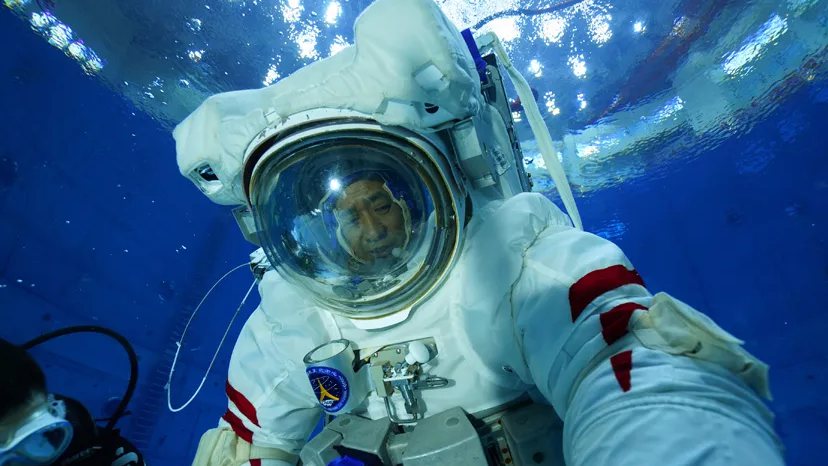
Nie Haisheng in the underwater training. /Innovation and Practice Center of Our Space
Nie Haisheng in the underwater training. /Innovation and Practice Center of Our Space
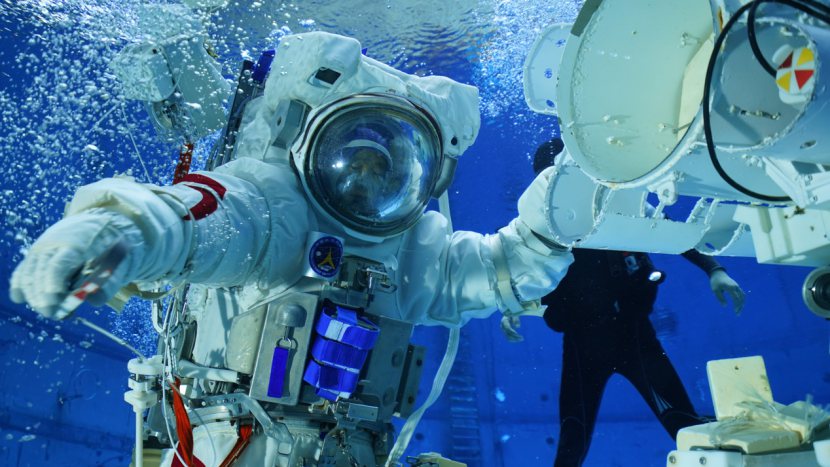
Liu Boming in the underwater training. /Innovation and Practice Center of Our Space
Liu Boming in the underwater training. /Innovation and Practice Center of Our Space
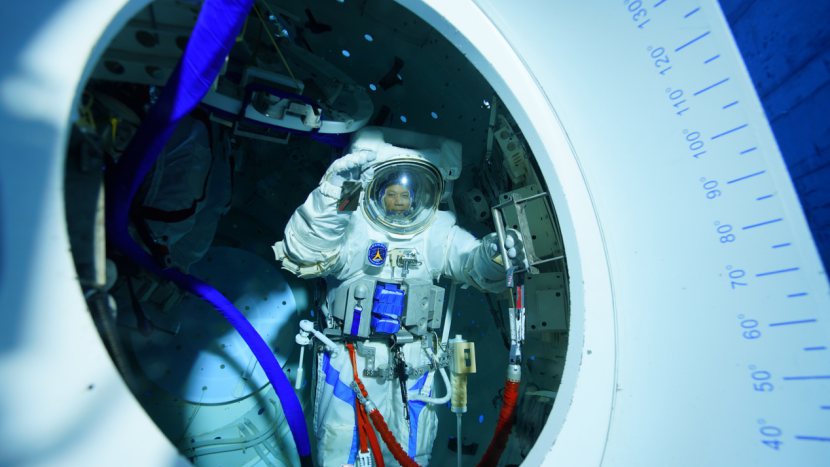
Tang Hongbo in the underwater training. /Innovation and Practice Center of Our Space
Tang Hongbo in the underwater training. /Innovation and Practice Center of Our Space
The astronauts underwent intense training for extravehicular operations, including training in a hypobaric chamber and water tank.
"We did a lot of special training in the hypobaric chamber to test our mental endurance, reaction and error correction capabilities in such a special environment," said Liu.
Water tank training, which lasted six hours each session, was conducted to simulate the microgravity environment.
"We have done a lot of preparation on the ground, collaboratively and synergistically," he said. "In space, we will give full play to our personal initiative while strictly following the manual."
The ground crew will provide auxiliary approaches and strong technical support when they encounter unexpected circumstances in space, Liu added.
The three-month stay in orbit has higher requirements for the living and health conditions of the crew. "We need to strengthen training for our health maintenance and living ability, so as to better adapt to working and living in space," Nie added.
The astronauts underwent confined space training to test their ability to respond to emergencies under extreme conditions in space.
"We did a one-month confined space training on the ground, which completely simulated the whole procedure in the space station, including work, living, waste disposal and so on," said Tang.
"We've been waiting for the space station era for years. After completion, the space station will be home to Chinese astronauts, and accommodate batches of astronauts," said Nie. "In the future, it will also welcome international astronauts to join our big family, do more scientific research at this platform, and use these achievements to benefit all mankind."

